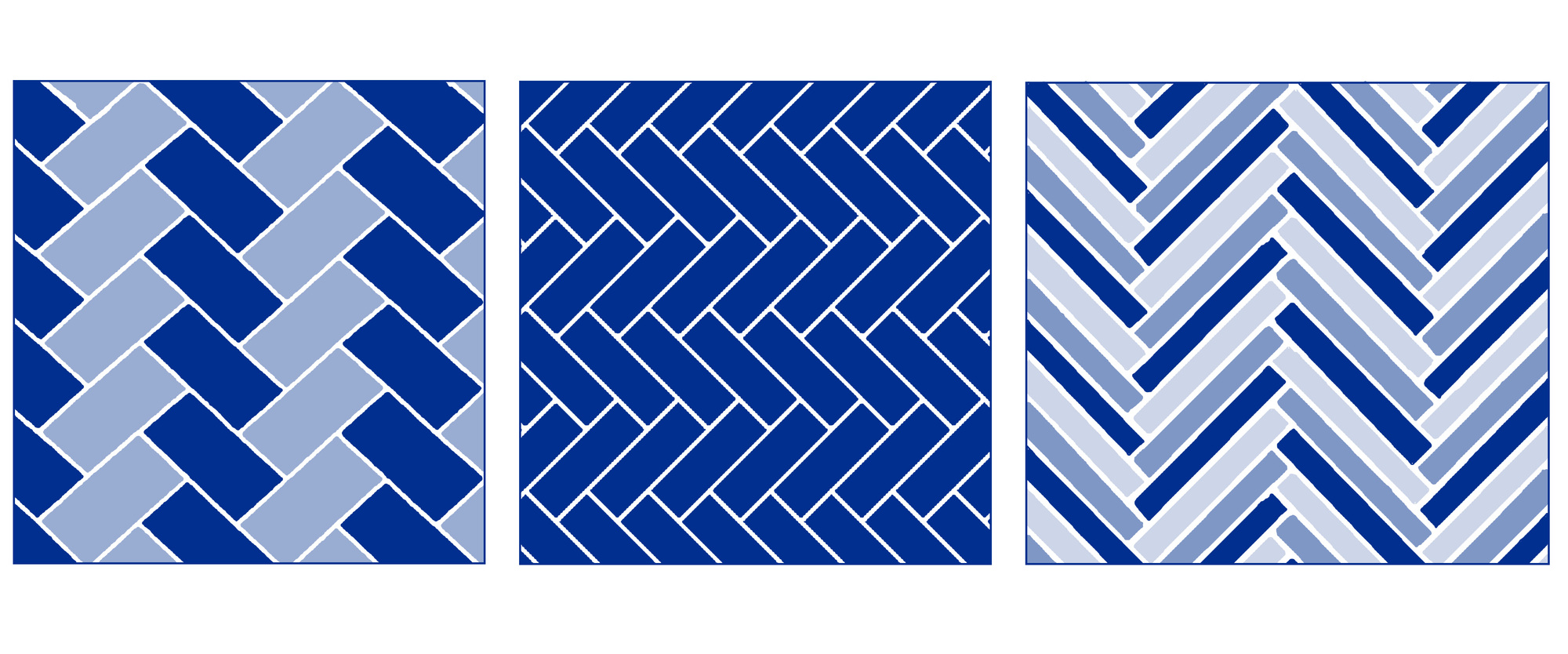Crafting Timeless Spaces: Practical Tips for Incorporating Herringbone Patterns
Key Takeaways:
- Herringbone patterns boast timeless elegance and cultural significance.
- The construction demands precision, offering an artful blend of tradition and innovation.
- Modern applications extend beyond flooring to diverse surfaces and furnishings.
- The enduring allure stems from its adaptability, psychological resonance, and sustainable choices.
- Practical considerations such as material choice, scale, lighting, and personalization are crucial for seamless incorporation.
I. Introduction:
The herringbone pattern, with its roots tracing back to ancient Rome, has woven itself into the fabric of design and architecture. This five-part exploration unveils the timeless elegance and craftsmanship behind herringbone patterns, traversing through history, construction techniques, contemporary applications, enduring allure, and practical considerations. From its historical significance to its adaptability in modern design, each part unfolds a layer of the herringbone story, showcasing its ability to bridge tradition and innovation seamlessly.
II. Unveiling the Artistry of Herringbone Patterns
In the world of design and architecture, the herringbone pattern stands as a testament to timeless elegance and artistic sophistication. Its distinct, angular arrangement of rectangular elements creates a visually captivating effect that has transcended centuries. This article embarks on a journey to unravel the secrets behind the allure of herringbone patterns, exploring their historical roots, versatility, and contemporary applications. Whether adorning the floors of historic landmarks or gracing modern interiors, the herringbone pattern weaves a story of craftsmanship and style.
A Walk Through History
The origins of the herringbone pattern can be traced back to ancient Rome, where it adorned the streets in durable, interlocking bricks. Over time, its popularity transcended borders, making appearances in diverse cultures and periods. The pattern’s name itself draws inspiration from the skeleton of a herring fish, as the arrangement mirrors the distinctive V-shaped bones found in the creature. As centuries passed, the herringbone pattern continued to evolve, becoming a symbol of both tradition and contemporary flair.
Versatility in Design
Part of the herringbone pattern’s enduring appeal lies in its versatility. It seamlessly blends into various design aesthetics, from classic to modern, rustic to refined. The pattern’s adaptability allows it to enhance the visual interest of spaces, whether through the warmth of wooden herringbone floors or the sophistication of herringbone backsplashes in kitchens. Its ability to complement diverse materials and colors makes it a staple in the toolkit of interior designers and architects alike.
Crafting an Illusion
Beyond its aesthetic charm, the herringbone pattern holds the power to manipulate perception. The interlocking elements create a sense of movement and depth, tricking the eye into perceiving spaces as larger or more dynamic than they may be. This optical illusion, when skillfully employed, can transform even the most modest room into a visually captivating masterpiece. Understanding the nuances of this illusion is crucial for those seeking to harness the full potential of the herringbone pattern in their design endeavors.
As we delve into the intricacies of the herringbone pattern, we invite readers to appreciate its historical significance and versatility. Join us in the subsequent parts of this exploration, where we will dissect the construction techniques, contemporary applications, and the timeless allure that continues to make herringbone patterns a beloved choice in the world of design.
III. Mastering the Art of Herringbone Construction
In the realm of design, the allure of the herringbone pattern lies not only in its visual appeal but also in the meticulous craftsmanship required for its construction. Achieving the perfect herringbone layout demands precision in placement and a keen eye for detail. This section unveils the secrets behind mastering the art of herringbone construction, exploring the techniques that elevate this pattern from a simple arrangement to a work of art.
Foundations of Flawless Installation
To embark on the journey of herringbone construction, one must first establish a solid foundation. Whether it’s for flooring, tiling, or other applications, the surface must be level and primed for the intricate arrangement that is to follow. The success of a herringbone pattern hinges on the initial groundwork, and any deviations can disrupt the harmony of the design.
The Puzzle of Angles and Interlocking Elements
Central to the herringbone pattern’s charm are the angles at which the rectangular elements interlock. The classic V-shape is achieved by aligning each piece with precision, creating a continuous, undulating flow. Achieving this seamless connection involves an understanding of angles, measurements, and the interplay of light and shadow. Craftsmen often speak of the pattern as a puzzle, where each piece plays a crucial role in completing the visual tapestry.
Traditional Techniques vs. Modern Innovations
While traditional herringbone construction involved meticulous hand-placement of individual elements, modern innovations have introduced efficiency without compromising the pattern’s integrity. Prefabricated herringbone panels and advanced installation techniques cater to contemporary demands, allowing designers and builders to bring the timeless allure of herringbone to a broader range of projects. However, the artistry of handcrafted herringbone installations continues to hold its own, appreciated for the unique touch and character it imparts.
Accentuating Design with Bordering and Insets
Beyond the primary layout, herringbone patterns offer opportunities for additional design flourishes. Borders and insets can be incorporated to frame the pattern, creating focal points or delineating specific areas. This customization adds a layer of complexity to herringbone designs, allowing for a tailored approach that suits the unique character of each space.
As we unravel the intricacies of herringbone construction, it becomes evident that this pattern is more than a simple arrangement of elements; it is a testament to craftsmanship and meticulous attention to detail. In the next part of this series, we will explore the contemporary applications of herringbone patterns, showcasing how this timeless design continues to captivate and inspire in the modern world.
IV. Herringbone Patterns in Contemporary Design
In the ever-evolving world of design, herringbone patterns continue to captivate enthusiasts, seamlessly bridging the gap between tradition and contemporary aesthetics. This section delves into the diverse ways herringbone patterns are utilized in modern design, from interior spaces to architectural elements, showcasing their ability to add a touch of sophistication and visual intrigue to a variety of environments.
Flooring Marvels
One of the most iconic applications of herringbone patterns in contemporary design is in flooring. Whether it’s hardwood, ceramic tiles, or luxurious marble, herringbone flooring adds a sense of refinement to any space. The pattern’s ability to elongate and widen visual perception makes it particularly popular in smaller rooms or narrow hallways, providing an illusion of spaciousness.
Herringbone Beyond the Floor
While flooring remains a classic choice, herringbone patterns have transcended traditional boundaries to adorn various surfaces. From accent walls to backsplashes, designers are incorporating the elegance of herringbone to create striking visual features. The versatility of this pattern allows it to seamlessly integrate into diverse design styles, be it the sleek, modern kitchen or the cozy, rustic living room.
Furnishing and Fabric
The influence of herringbone patterns extends beyond hard surfaces to soft furnishings and fabrics. Upholstery, throw pillows, and even curtains featuring herringbone designs bring a sense of continuity and harmony to interiors. This application allows for a subtle incorporation of the pattern, providing a cohesive look without overwhelming the space.
Architectural Accents
In contemporary architecture, herringbone patterns are employed as more than just surface adornments. From exterior facades to interior architectural elements, such as fireplace surrounds or ceiling treatments, the herringbone pattern introduces a layer of sophistication and complexity to the overall design. These applications showcase the adaptability of herringbone to various scales and contexts within modern architecture.
The Intersection of Technology and Tradition
Advancements in technology have expanded the possibilities for incorporating herringbone patterns into contemporary designs. Computer-aided design (CAD) allows for precise planning and execution, ensuring the accuracy of complex herringbone arrangements. Additionally, the use of laser-cutting technology enables intricate herringbone patterns in materials like metal and acrylic, pushing the boundaries of traditional craftsmanship.
As we explore the contemporary manifestations of herringbone patterns, it becomes evident that this timeless design element has seamlessly transitioned into the modern era. Join us in the next part of this series, where we will delve into the enduring appeal of herringbone patterns and how they contribute to the overall aesthetic of a space, standing as a testament to the harmony between tradition and innovation.


